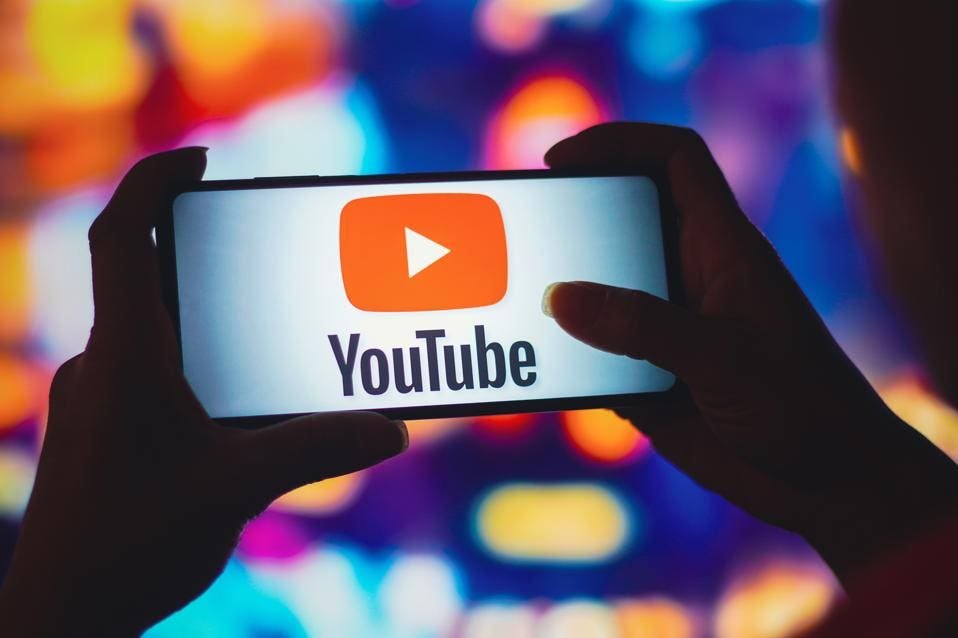Google’s YouTube is ramping up its crackdown on privacy-preserving ad blockers to include third party apps. It comes after a YouTube ad blocking crackdown that started last year when users started receiving a pop up encouraging them to disable ad blockers or pay for Premium. YouTube also started disabling videos when users had enabled an ad blocking extension.
Now, YouTube has issued a new warning to anyone using a third party app on the video streaming platform. “We’re strengthening our enforcement on third party apps that violate YouTube’s Terms of Service, specifically ad blocking apps,” Google said in an announcement on its support page.
Google’s YouTube is ramping up its crackdown on privacy-preserving ad blockers to include third … [+]
SOPA Images/LightRocket via Getty Images
YouTube explained how the platform only allows third party apps to use its API when they follow its API Services Terms of Service, and “when we find an app that violates these terms, we will take appropriate action to protect our platform, creators, and viewers.”
What Happens If I Use a Third Party App to Block Ads on YouTube?
During the last crackdown on ad blocking extensions, YouTube users noticed buffering on the platform, often making it unusable. Under the YouTube’s latest crackdown, viewers using third-party apps may experience buffering issues or see the error, “The following content is not available on this app” when trying to watch a video, Google said.
It looks like YouTube’s plan is working, with users on X formerly Twitter saying they were unable to use their ad blocking apps.
Forbes Daily: Join over 1 million Forbes Daily subscribers and get our best stories, exclusive reporting and essential analysis of the day’s news in your inbox every weekday.
By signing up, you agree to our Terms of Service, and you acknowledge our Privacy Statement. Forbes is protected by reCAPTCHA, and the Google Privacy Policy and Terms of Service apply.
Ibotta IPO Reportedly Raises $577 Million—Above Marketed Range
What’s Next For Bitcoin Prices After Their Latest Pullback?
InnovationRx Legislation Could Prevent Pharma Companies From Working With Chinese Contractors
AdGuard Says It’s Not Affected By YouTube’s Latest Ad Blocking Crackdown
Ad blocking giant AdGuard was quick to respond to YouTube’s announcement, saying in a blog that it is not affected. This is because AdGuard for Android and AdGuard for iOS apps do not use YouTube’s official tools—its API—to block ads.
“Instead, AdGuard plays the video in its own in-app browser, similar to how you would watch YouTube with an ad blocker in a regular web browser,” the firm wrote. “This method allows AdGuard to use the same filters that are available in the browser.”
Why Is Google Cracking Down On Ad Blockers?
Let’s be clear, Google’s business model relies on advertising, and ad blockers on YouTube pose a major threat to this. Google also points out that if you turn off ads, creators don’t get paid, which could of course force them to leave the platform.
“We emphasize that our terms don’t allow third-party apps to turn off ads because that prevents the creator from being rewarded for viewership, and Ads on YouTube help support creators and let billions of people around the world use the streaming service,” Google said.
“We also understand that some people prefer an entirely ad-free experience, which is why we offer YouTube Premium,” it added.
YouTube’s Ad Blocking Crackdown—What To Do
YouTube’s crackdown on ad blockers was never ideal, but this latest move to expand it to third party apps shows the firm means business—it’s not going to backtrack. While you might find some ad blockers—such as AdGuard—still work on YouTube, it’s likely the platform will find ways to detect and ban them eventually.
If you don’t want to watch ads and you care about your privacy, it might be better to pay for YouTube Premium. Otherwise, there are alternative streaming platforms to move to, such as Dailymotion, DTube or Vimeo, but the content probably won’t be as vast and you often still have to pay.


